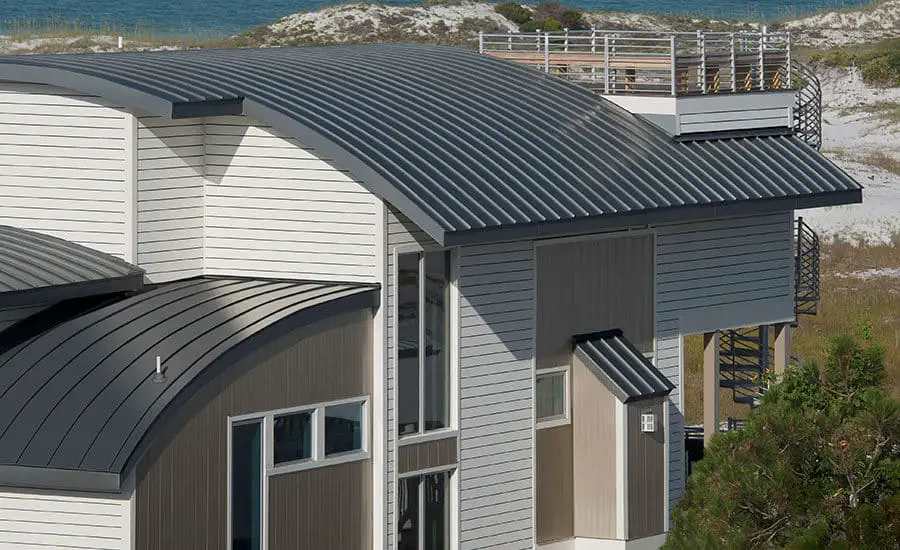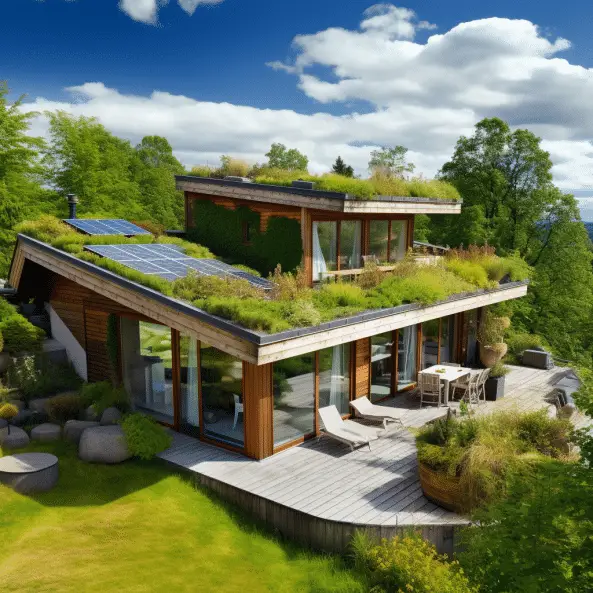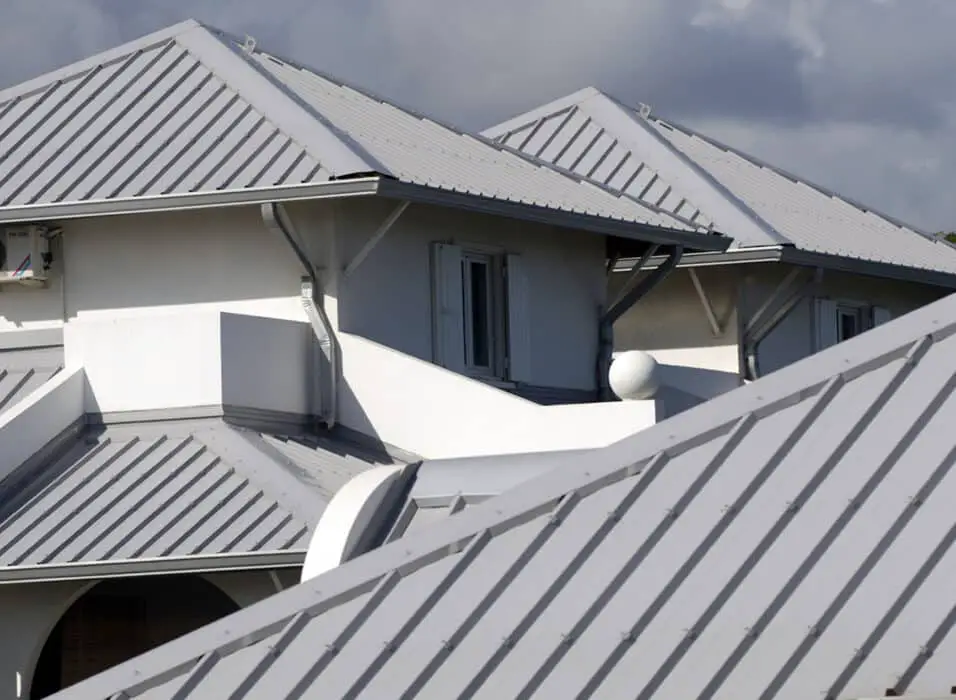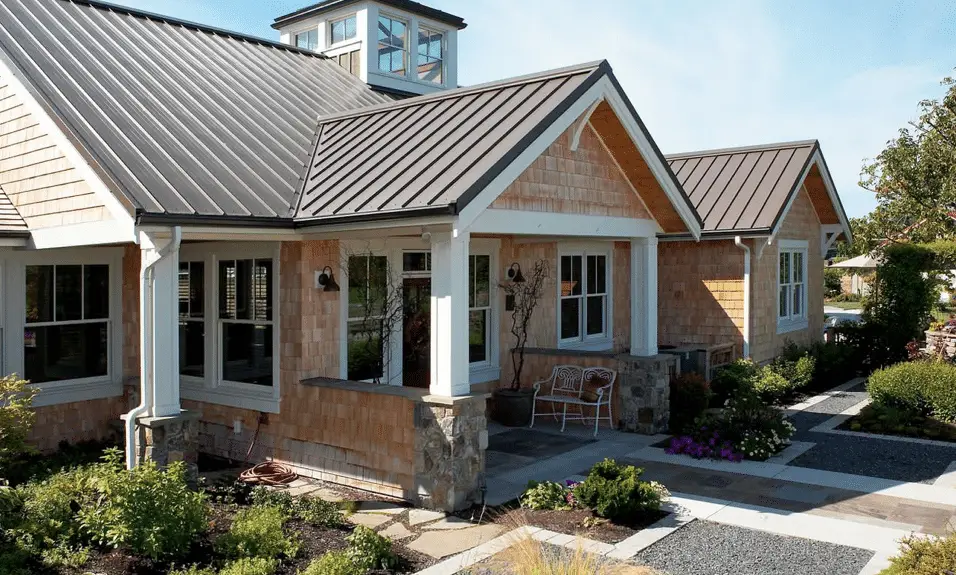How To Make A Curved Metal Roof
Introduction
How To Make A Curved Metal Roof: When it comes to constructing a curved metal roof, there are several key factors to consider. The first step is to determine the desired curvature and dimensions of the roof. Common options include steel, aluminum, or copper, each offering its own unique advantages in terms of durability, cost, and aesthetic appeal.
Preparing the roof framework follows choosing the metal. This includes making curved trusses or beams to support metal panels. These structural elements must match the roof’s curvature. The framework must be strong enough to support the metal panels and external pressures like wind and snow.
Finally, caulk and finish the curved metal roof for durability and weather resistance. This entails painting or coating the metal surface to prevent corrosion and UV damage and improve its appearance. Clean the roof and check for damage or wear to extend the life of the curved metal roof.
Homeowners and builders benefit from learning how to make curved metal roofs. Following the step-by-step instructions in this article, you can make a beautiful and durable curving metal roof that enhances any structure’s aesthetics and utility.
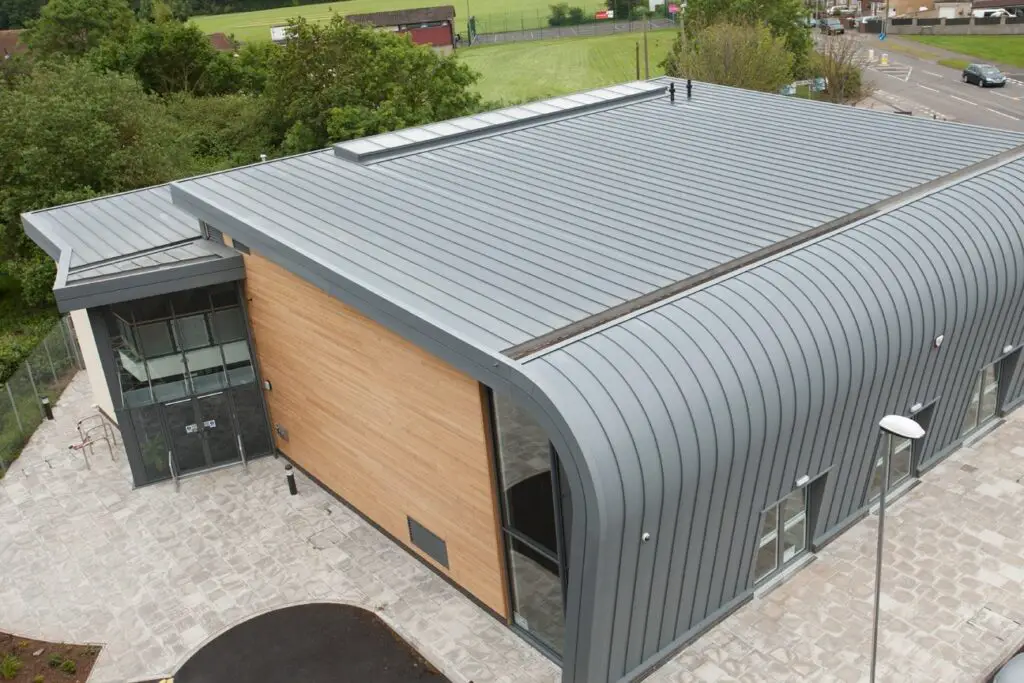
Can you curve a metal roof?
Curving a metal roof is a common practice in the construction industry. It involves shaping the metal sheets into a curved form to create a unique and aesthetically pleasing roof design. There are several reasons why someone might choose to curve a metal roof. Firstly, a curved roof can enhance the overall appearance of a building. It adds a sense of fluidity and movement to the structure, breaking away from the traditional flat roof design. This can be particularly appealing for contemporary or avant-garde architectural styles.
Curving a metal roof is a popular choice for those seeking to add a unique and visually appealing element to their building. It offers both aesthetic and functional advantages, enhancing the overall appearance while improving water drainage and structural integrity.
Can you curve corrugated metal roofing?
This same corrugated profile is also used in curved form as roofing for the traditional bullnosed verandah and walls of rainwater tanks. The curving process involves following the basic practice of feeding the sheets squarely into curving rolls and making sufficient passes to achieve the desired curve.
Corrugated metal roofing is a popular choice for both residential and commercial buildings due to its durability and cost-effectiveness. However, one common question that arises is whether it is possible to curve corrugated metal roofing. The answer to this question is yes, it is indeed possible to curve corrugated metal roofing, but it requires special techniques and tools to achieve the desired results.
This process is typically done using a specialized machine that is designed specifically for curving metal roofing. The machine applies pressure to the metal panels, causing them to bend and form the desired curve. Thicker and more rigid metal panels may not be suitable for curving.
How do you bend and shape steel?
Bending Methods
- Using your hands: Some metals can be bent by applying force to them with your hands. …
- Using a vice and hammer: This method involves clamping the metal in a vice and using a hammer to it until you get the desired angle. …
- Using pliers: This is ideal for small pieces of metal.
Steel is a versatile and widely used material in various industries due to its exceptional strength and durability. The process of bending and shaping steel is crucial in manufacturing a wide range of products, from construction materials to automotive components. This article will explore the techniques and methods employed to bend and shape steel effectively.
Bending Steel:
One of the primary methods used to bend steel is through the application of heat. This process, known as hot bending, involves heating the steel to a specific temperature, typically above its recrystallization temperature.
Cold Bending:
Another technique for bending steel is cold bending, which does not require the use of heat. These machines apply force to the steel, gradually bending it into the desired shape.
Shaping Steel:
In addition to bending, shaping steel involves various processes to mold the material into specific forms. This allows for the creation of complex structures and components.
Bending and shaping steel are essential processes in the manufacturing industry. Whether through hot bending or cold bending, these techniques enable the creation of various steel products with different shapes and sizes. Additionally, shaping steel involves cutting and welding, which further enhance the versatility of this material. By understanding and utilizing these techniques effectively, manufacturers can harness the full potential of steel and produce high-quality products for a wide range of applications.
Are curved roofs expensive?
Curved roofs have long been admired for their unique and aesthetically pleasing design. They add a touch of elegance and sophistication to any structure, whether it’s a residential home or a commercial building. However, one common concern that arises when considering a curved roof is its cost. Are curved roofs expensive? Let’s delve into this question and explore the factors that contribute to the overall expense of curved roofs.
Design Complexity:
The design complexity of a curved roof is one of the primary factors that can influence its cost. Creating a curved roof requires specialized skills and expertise, as it involves intricate calculations and precise measurements. Architects and engineers need to carefully plan and design the structure to ensure its stability and functionality. The complexity of the design process often translates into higher costs, as it requires additional time and resources to bring the vision to life.
Materials:
The choice of materials also plays a significant role in determining the cost of curved roofs. While there are various options available, such as metal, concrete, or shingles, some materials are more expensive than others. For instance, if you opt for a metal curved roof, you may incur higher costs due to the specialized fabrication required to shape the metal sheets. Additionally, the quality and durability of the materials can impact the overall cost, as higher-quality materials tend to be more expensive.
Construction Techniques:
The construction techniques employed for curved roofs can also affect their cost. Building a curved roof requires skilled labor and specialized equipment to ensure precision and accuracy during the construction process. The complexity of the design may necessitate the use of advanced construction techniques, which can increase the overall cost.
Maintenance and Repairs:
Another aspect to consider when evaluating the cost of curved roofs is their maintenance and repair requirements. While curved roofs can be visually stunning, they may require more frequent maintenance compared to traditional roofs. The unique shape and design of curved roofs can make it challenging to access certain areas for repairs or inspections, potentially increasing the cost of maintenance. It is essential to factor in these ongoing expenses when considering the overall cost of a curved roof.
Curved roofs can indeed be more expensive compared to traditional flat roofs. The design complexity, choice of materials, construction techniques, and maintenance requirements all contribute to the overall cost. However, it is important to remember that the cost of a curved roof can vary depending on various factors, such as the size of the structure, location, and specific design requirements. Consulting with professionals and obtaining detailed quotes from contractors can provide a more accurate estimate of the cost involved in installing and maintaining a curved roof.
What is the maximum slope for a metal roof?
A metal roof is a popular choice for many homeowners due to its durability, longevity, and aesthetic appeal. One important factor to consider when installing a metal roof is the maximum slope it can accommodate. The slope of a roof refers to its steepness or angle, and it plays a crucial role in determining the overall performance and functionality of the roof. In this article, we will explore the concept of maximum slope for a metal roof and discuss its significance in ensuring a successful installation.
Factors influencing the maximum slope:
Several factors influence the maximum slope that a metal roof can accommodate. Different metals have varying levels of flexibility and strength, which can affect their ability to withstand steep slopes. Additionally, the profile or shape of the metal panels also plays a role.
Regions with heavy rainfall or snowfall may require a lower maximum slope to prevent water or snow buildup, which can lead to leaks or structural damage. Wind conditions are also important to consider, as high winds can exert additional pressure on the roof, especially at steeper angles.
Importance of adhering to the maximum slope:
Adhering to the recommended maximum slope for a metal roof is crucial for several reasons. Firstly, it ensures proper water drainage, preventing water from pooling on the roof’s surface and potentially causing leaks. Secondly, it helps maintain the structural integrity of the roof, as excessive slopes can put additional stress on the metal panels and supporting structures. Lastly, following the maximum slope guidelines ensures that the roof will perform optimally and have a longer lifespan, reducing the need for repairs or replacements in the future.
After the materials are ready, the installation process begins. This typically starts with preparing the roof deck, ensuring it is clean, level, and structurally sound. Then, the curved metal panels are carefully installed, starting from the bottom and working upwards. Special attention is given to properly aligning and fastening the panels to ensure a secure and watertight fit.
What materials are required to construct a curved metal roof?
Constructing a curved metal roof requires specific materials that are designed to withstand the unique challenges posed by the curved shape. The primary material used for curved metal roofs is typically metal panels, such as steel or aluminum, which offer durability and strength.
In addition to the metal panels, other materials are necessary for the construction process. It is important to choose fasteners that are compatible with the chosen metal material to ensure proper installation and long-term stability.
Furthermore, a curved metal roof may require insulation materials to provide thermal and sound insulation. Insulation helps regulate temperature and reduce noise transmission, enhancing the overall comfort and energy efficiency of the building.
Are there any specific tools or equipment needed for the construction process?
When it comes to constructing a curved metal roof, there are several specific tools and equipment that are essential for the process. Metal brakes come in various sizes and types, including hand-operated brakes and hydraulic brakes, depending on the scale of the project.
Furthermore, it is important to have safety equipment such as gloves, safety glasses, and ear protection when working with metal and using these tools. These precautions help protect against potential injuries and ensure a safe working environment. Overall, having the right tools and equipment is essential for the successful construction of a curved metal roof, allowing for precise bending and shaping of the metal sheets to achieve the desired curved shape.
Are there any safety precautions that need to be taken while making a curved metal roof?
When constructing a curved metal roof, it is crucial to prioritize safety to prevent accidents and ensure a successful project. This includes safety helmets, gloves, safety glasses, and steel-toed boots. PPE helps protect against potential head injuries, hand injuries, eye injuries, and foot injuries.
Fall Protection: It is crucial to have proper fall protection measures in place, such as safety harnesses, guardrails, and safety nets. These precautions help prevent falls and minimize the risk of serious injuries or fatalities.
Proper Lifting Techniques: Curved metal roof construction may require lifting heavy materials and equipment. Workers should be trained in proper lifting techniques to avoid strains, sprains, and back injuries.
Are there any specific techniques or tips for achieving a smooth and seamless curved shape in the metal roof?
When it comes to achieving a smooth and seamless curved shape in a metal roof, there are several techniques and tips that can greatly contribute to the success of the construction process. One important technique is to carefully plan and design the curvature of the roof beforehand. This involves determining the desired radius and curvature, as well as considering factors such as the type of metal being used and the structural requirements of the roof.
Another crucial tip is to use the appropriate metal bending techniques and equipment. This may involve using specialized tools such as a metal brake or a roll-forming machine to accurately shape the metal panels. It is important to ensure that the metal is bent gradually and evenly to avoid any kinks or deformations that could compromise the smoothness of the curved shape.
Additionally, proper installation techniques are essential for achieving a seamless curved shape in the metal roof. This includes carefully aligning and securing the metal panels to ensure a tight fit and smooth transition between each panel. It is also important to use high-quality fasteners and sealants to prevent any gaps or leaks that could affect the overall appearance and performance of the roof.
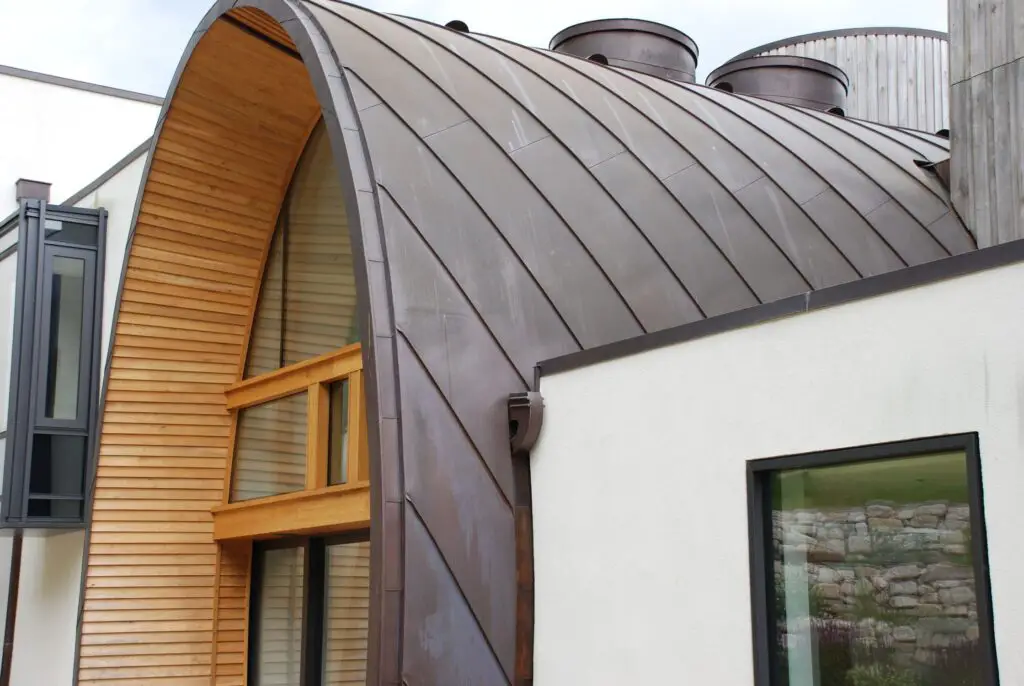
Conclusion
Creating a curved metal roof is a complex process that requires careful planning, precise measurements, and skilled craftsmanship. This project involves several steps, including designing the roof, fabricating the metal panels, and installing them on the structure. One of the key aspects of making a curved metal roof is the design phase. This involves determining the desired curvature, calculating the dimensions, and creating a detailed plan.
Once the design is finalized, the fabrication of the metal panels can begin. This process involves cutting, bending, and shaping the metal sheets to match the desired curvature. It is essential to use high-quality materials and employ precise techniques to achieve the desired results. The panels should be carefully inspected for any imperfections or defects before installation to ensure a flawless finished product.
The final step in creating a curved metal roof is the installation process. This requires skilled labor and specialized equipment to properly secure the panels onto the roof structure. It is crucial to follow industry best practices and safety guidelines during installation to prevent any accidents or damage. Additionally, proper sealing and insulation should be applied to ensure the roof is watertight and energy-efficient



